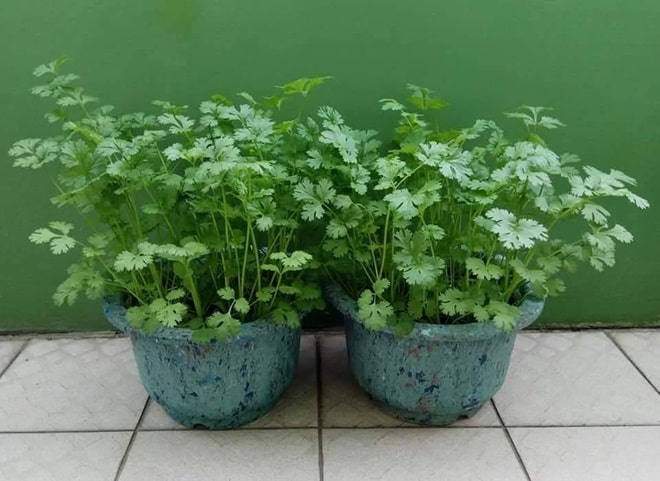
Coriander is a herb used for seasoning due to its distinctive aroma. Around the world, coriander is used in a variety of dishes. Additionally, this herb is a prominent medicinal plant that can be used for its roots and leaves to stimulate digestion and promote milk production.
When growing coriander from seeds at home, gardeners need to pay attention to the weather conditions in their area. Essentially, this herb can be grown anywhere, but it may struggle to thrive in extremely cold or hot weather.
It’s advisable to plant coriander at the end of summer so that it can develop as autumn arrives. Be aware that if the weather is too hot, coriander will flower and produce seeds. During this time, you can grow coriander in foam containers indoors and then transfer it outside when the weather improves.
>>>See More: How to Grow Mint from Cuttings
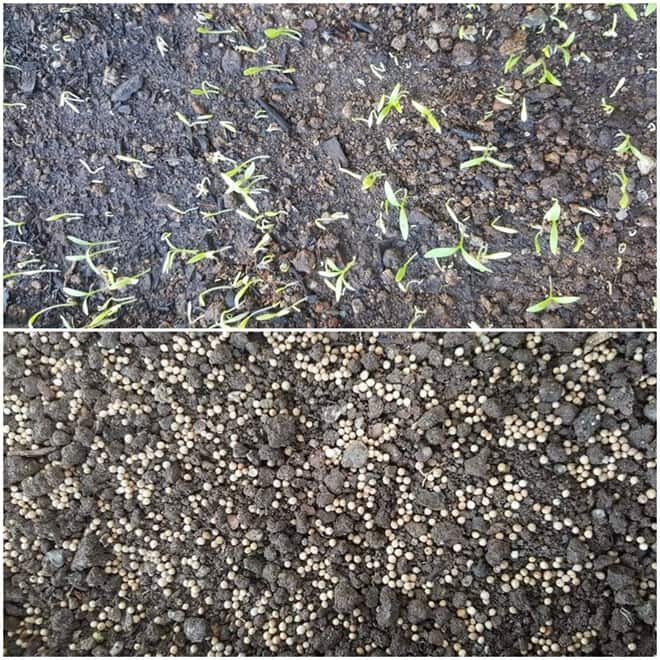
To achieve the best results when growing coriander from seeds at home in your garden, follow these steps:
It’s best to select a well-lit area. Additionally, the soil for planting coriander should have good drainage to avoid waterlogging, and ideally, the pH should be between 6.2 and 6.8.
Use a shovel to loosen the soil about 5 to 7 cm deep. Then, add organic matter to improve the soil, including compost, decomposed leaves, and well-rotted manure. It’s important to choose manure that has been decomposed for at least 3 months, as using fresh manure can kill young plants.
Once the soil is prepared, proceed to sow the seeds. Ideally, coriander seeds should be sown about 0.6 cm deep in the soil, with each seed spaced around a hand’s width apart. Each row of coriander should be about 30 cm apart.
After sowing, remember that coriander requires a lot of moisture, so water regularly. On average, each seed needs about 20 ml of water per week, and it will take about 2 to 3 weeks for the seeds to germinate.
Since coriander grows very quickly and is often used as a seasoning, you should continue to sow new batches every 2 to 3 weeks. This continuous planting method will ensure you have coriander available even after the first crop is harvested.
Once the coriander plants reach a height of about 5 cm, you can add fertilizer. Be careful not to use too much fertilizer, as this can kill the plants; instead, apply a light layer. If the plants are growing well, additional fertilization may not be necessary.
When the coriander plants are established, they won’t need much water. At this point, only water them when the soil becomes very dry.
If you notice that the coriander is growing too densely, you can thin out the seedlings. Choose the smaller, weaker plants to trim and use first.
If weeds are growing abundantly, you can cover the base of each coriander plant with straw or mulch.
When the coriander plants reach a height of 10 to 15 cm, you can begin to harvest. Use a knife or scissors to cut each plant close to the soil surface.
Coriander should be used fresh after harvesting; avoid using older coriander as it may have thick, bitter leaves.
A good harvesting technique is to cut about one-third of the leaves from each coriander plant. This allows the plants to continue growing so you can use them again.
You should leave a few coriander plants to flower and produce seeds for your next planting.
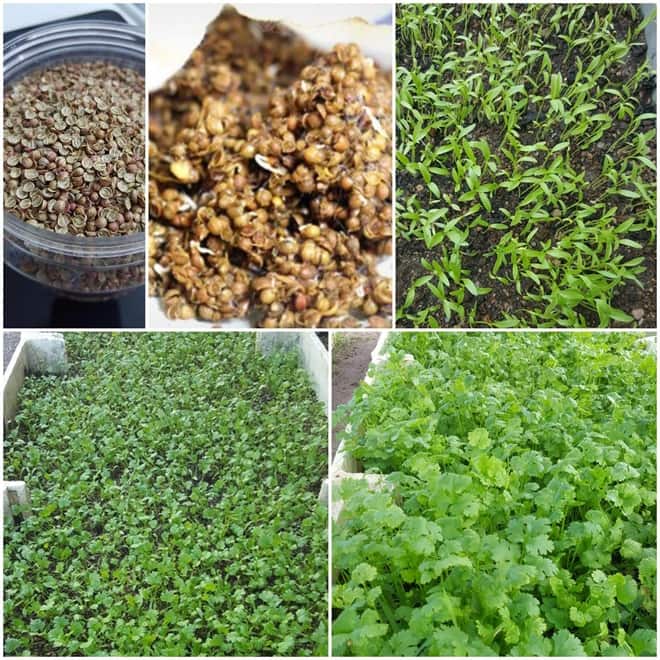
While it’s best to grow vegetables in a garden, not everyone has access to garden space, especially in urban areas. In such cases, you can grow coriander on a balcony or in recycled plastic containers. This method is also quite simple; here’s how to do it:
For coriander, it’s best to select a wide container that is at least 45 cm in diameter and about 20 cm deep.
Keep in mind that coriander doesn’t like being moved around too much, so a larger container is preferable.
Choose well-draining, loose soil and fill the container. If the soil quality is poor, you can add a bit of fertilizer or coconut coir.
Add a little water to the soil to moisten it (but do not make it soggy).
Sprinkle the seeds evenly on the soil surface, then cover them with about 0.5 cm of loose soil.
Place the container in a location inside your home that receives plenty of sunlight, such as a balcony or near a window.
The south-facing direction usually gets the most sunlight, so position your coriander container there.
Use a spray bottle to water the plants daily, avoiding direct pouring to prevent displacing the seeds.
After 7 to 10 days, the coriander seeds should germinate.
When the coriander reaches about 10 cm (approximately half a hand’s width), you can start harvesting.
It’s advisable to cut 2/3 of the leaves each week to encourage the plants to continue growing. This way, you can harvest up to 4 batches of coriander from one container.
The above is the method for growing coriander from seeds at home as introduced by My Garden. If you have any questions, feel free to message us on Facebook at My Garden My Love!
Ý kiến bạn đọc
Những tin mới hơn
Những tin cũ hơn
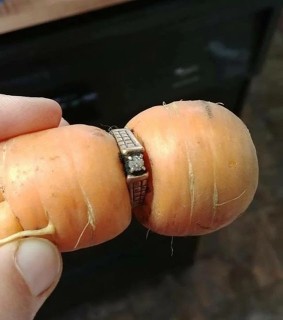 The most unique carrots in the world!
The most unique carrots in the world!
05.09.2024
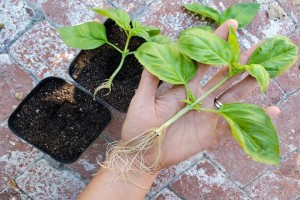 Guide to Propagating Basil Cuttings for Beginners
Guide to Propagating Basil Cuttings for Beginners
30.08.2024
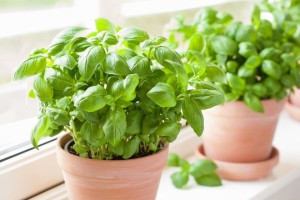 How to take care of basil plant indoors for Beginners
How to take care of basil plant indoors for Beginners
30.08.2024
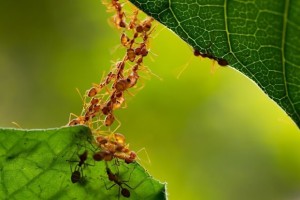 Interesting Facts About Ants
Interesting Facts About Ants
23.08.2024
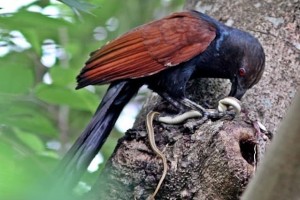 Coucal bird: Natural Enemy of Snakes
Coucal bird: Natural Enemy of Snakes
22.08.2024